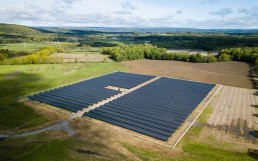
New York State is one of the most advanced solar markets in the country, with a wide range of incentives and available solutions. From on-site installations to remote net metering (RNM), solar and storage are accessible to nearly everyone, from urban households in Manhattan to remote farms up state.
With a variety of program options, one would think that adopting renewable energy is a no-brainer; a win for both one’s pocket and the environment. Early programmatic pitfalls, however, have made some customers weary of going through the experience. Fortunately, more recent updates have sought to correct these issues, making solar and storage more beneficial to customers.
Here are some common obstacles to procuring solar and energy storage that have occurred in the past, as well as updates and new programs that make procurement much more friendly to New Yorkers.
Monetary Credit Confusion
In the past, the crediting mechanism in New York was based on the service classification at the array’s location, meaning that the value fluctuated depending on where the project was based. Most Power Purchase Agreements (PPAs) executed under this methodology were at a fixed rate. The risk at the time was that the credit rate could at times fall below the PPA rate, thus costing customers more for electricity.
A much more transparent crediting mechanism exists under the VDER structure. The New York State Energy and Development Association (NYSERDA) even published an online calculator to help customers better estimate compensation for specific solar projects. This, coupled with Power’s percent discount to VDER PPA model, means that regardless of the fluctuating credit rate, the customer will always see savings. This makes it far easier for customers to estimate energy costs for budgeting.
While solar costs have reduced in previous years, we are starting to see that trend level off. This, coupled with the reduction in incentives, points to the highest savings from solar being now.
For more information on how incentive programs work, refer to Part I.
Delayed Project Completion Timelines
In the past, customers were executing PPAs very early in the development process before there was absolute certainty that the project could be executed. Part of this was based on the ability to secure incentives early on. This essentially meant that a customer was tied to a project with unknown costs, and in some instances, were re-traded if pricing came back undesirably.
That process has changed in that most solar providers develop projects to a certain point before seeking a customer to purchase, or offtake the power. For example, ForeFront Power has several shovel ready projects in New York state with known costs and timelines. These projects are currently seeking Community Solar Anchor tenants.

Lengthy Project Terms
Most customers are concerned about executing a 25-year energy services agreement. If a customer has intentions to move or shut down their facilities, then a multi-decade agreement is not realistic. However, if a business intends to be at the same location for 25 years, then they have a 25-year contract with the utility to purchase energy. The difference between ForeFront Power’s PPA and the utility is that the utility can increase the price and pass along cost increases to their customers, while the PPA remains ‘flat’, or in some cases, even de-escalate. Because the PPA rate is being indexed off the utility VDER credit, the customer is guaranteed 10% savings on the KWhs that the system produces. For the off-taker, this means long term price security. Additionally, because customers can point to a physical solar array and battery system, this can be used as a sustainable branding opportunity.
Finding the Right Partner
While the programs and processes haven’t always been perfect, the rewards that well-developed solar and storage projects provide are undeniable. Renewable energy not only lowers energy costs but provides numerous benefits to the community and environment as well. New and improved programs such as NY SUN and VDER, which we outline in Part I, have made these savings more tangible to customers.
Despite pitfalls in the past, the timing is ripe to take advantage of incentives while they still last. Having sufficient understanding of incentives and knowing your options is important but finding a reliable partner that can help you do both is the key to executing a successful project.
ForeFront Power understands what it takes to make solar and storage pencil in New York, with over 70 MW in development and operation. Our long-standing experience, knowledge of the market, and reputation for high-quality projects makes us a leader in renewable energy development. ForeFront Power’s experts can provide a free, non-obligatory evaluation to see which energy solutions are right for you.
More Resources
Here are some additional articles related to solar and storage in New York.
New York Solar Questions Answered Part I: Demystifying Incentives
Not Just for Households: How New York Business Owners Can Benefit from Community Solar
Why Solar and Storage in New York? Taking Advantage of Savings and Programs Before They’re Gone

Interested in learning more?
We would love to discuss how our solutions might be a fit for your organization. Contact one of our solar, storage, or e-mobility experts today:







